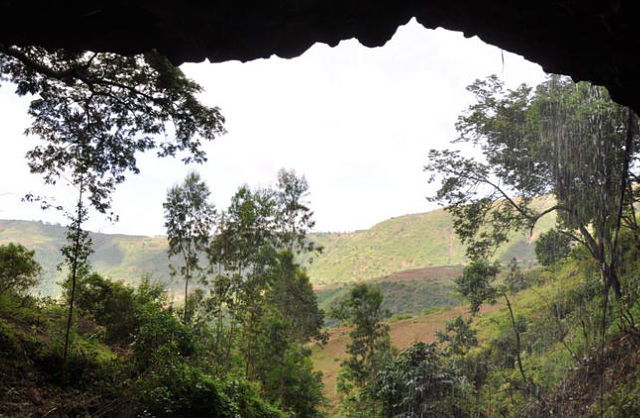 Mota cave in Ethiopia, where researchers found the body of a 4,500-year-old man whose DNA was still preserved. (Photo: Kathryn and John Arthur via LA Times)
Mota cave in Ethiopia, where researchers found the body of a 4,500-year-old man whose DNA was still preserved. (Photo: Kathryn and John Arthur via LA Times)
By Karen Kaplan
DNA from a man who lived in Ethiopia about 4,500 years ago is prompting scientists to rethink the history of human migration in Africa.
Until now, the conventional wisdom had been that the first groups of modern humans left Africa roughly 70,000 years ago, stopping in the Middle East en route to Europe, Asia and beyond. Then about 3,000 years ago, a group of farmers from the Middle East and present-day Turkey came back to the Horn of Africa (probably bringing crops like wheat, barley and lentils with them).
Population geneticists pieced this story together by comparing the DNA of distinct groups of people alive today. Since humans emerged in Africa, DNA from an ancient Africa could provide a valuable genetic baseline that would make it easier for scientists to track genome changes over time.
Unfortunately, such DNA has been hard to come by. DNA isn’t built to last for thousands of years. The samples of ancient DNA that have been sequenced to date were extracted from bodies in Europe and Asia that were naturally refrigerated in cooler climates.
That’s what makes the Ethiopian man so special. His body was found face-down in Mota cave, which is situated in the highlands in the southern part of the country. The cool, dry conditions in the cave preserved his DNA, and scientists extracted a sample from the petrous bone at the base of his skull. The resulting sequence is the first nuclear genome from an ancient African, according to a report published Thursday in the journal Science.
Read more at the Los Angeles Times »
—
Join the conversation on Twitter and Facebook.

























